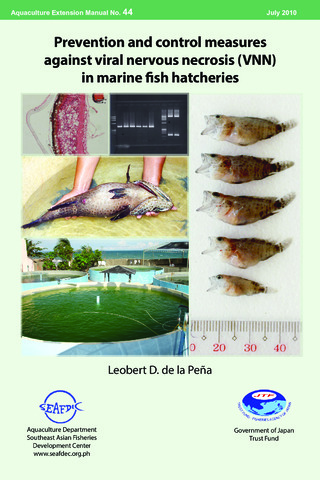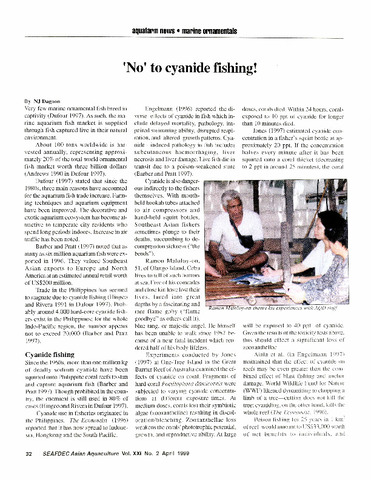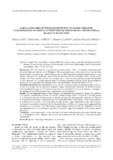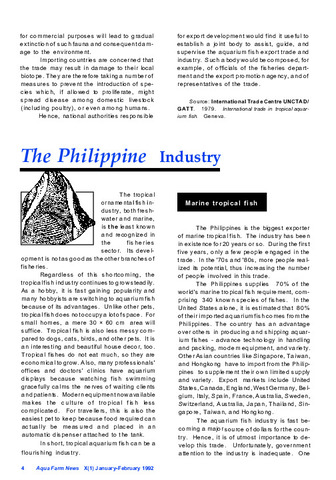Prevention and control measures against viral nervous necrosis (VNN) in marine fish hatcheries
- Global styles
- MLA
- Vancouver
- Elsevier - Harvard
- APA
- Help

View/
Date
2010Author
Page views
4,050ASFA keyword
AGROVOC keyword
Metadata
Perlihat publikasi penuh
Share
Abstract
An extension manual that describes the clinical signs, behavioral changes, geographical distribution, and species affected by the virus; detection, prevention and control methods especially in the hatchery phase are also included.
Suggested Citation
de la Peña, L. D. (2010). Prevention and control measures against viral nervous necrosis (VNN) in marine fish hatcheries. Tigbauan, Iloilo, Philippines: Aquaculture Dept., Southeast Asian Fisheries Development Center.
Type
BookISSN
0115-5369Series
Aquaculture extension manual; No. 44Format
26 p. : ill.
Koleksi
Related items
Showing items related by title, author, creator and subject.
-
'No' to cyanide fishing!
Dagoon, N. J. (Aquaculture Department, Southeast Asian Fisheries Development Center, 1999) -
Larval and early juvenile development of silver therapon, Leiopotherapon plumbeus (Actinopterygii: Perciformes: Terapontidae), reared in mesocosms
Aya, Frolan ; Corpuz, Mark Nell C.; Laron, Manuel A.; Garcia, Luis Maria
; Corpuz, Mark Nell C.; Laron, Manuel A.; Garcia, Luis Maria  (Szczecińskie Towarzystwo Naukowe, 2017)
The silver therapon, Leiopotherapon plumbeus (Kner, 1864), is an endemic and economically important freshwater food fish in the Philippines. The natural populations of this species have been declining during the past years, ...
(Szczecińskie Towarzystwo Naukowe, 2017)
The silver therapon, Leiopotherapon plumbeus (Kner, 1864), is an endemic and economically important freshwater food fish in the Philippines. The natural populations of this species have been declining during the past years, ... -
The Philippine industry: Marine tropical fish
Castaños, Milagros T.; Southeast Asian Fisheries Development Center, Aquaculture Department (Aquaculture Department, Southeast Asian Fisheries Development Center, 1992)




